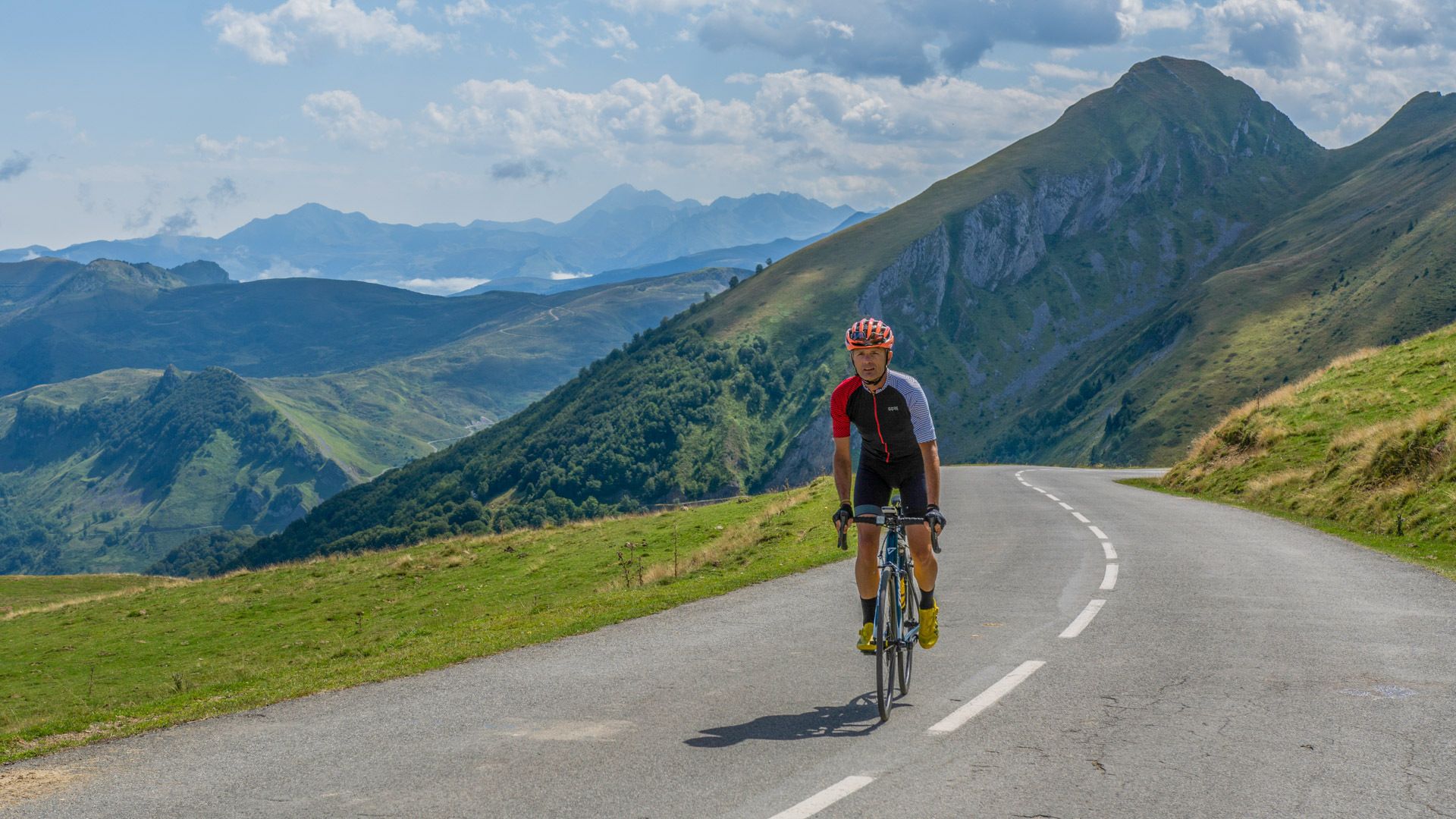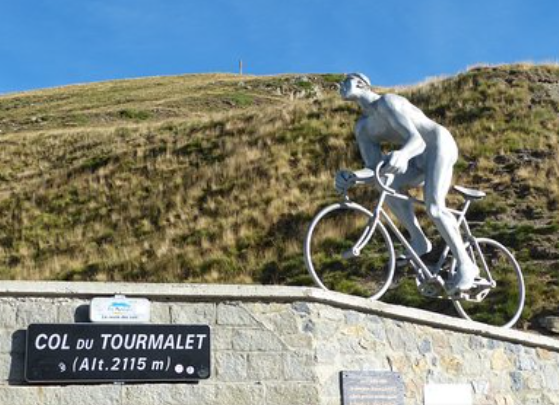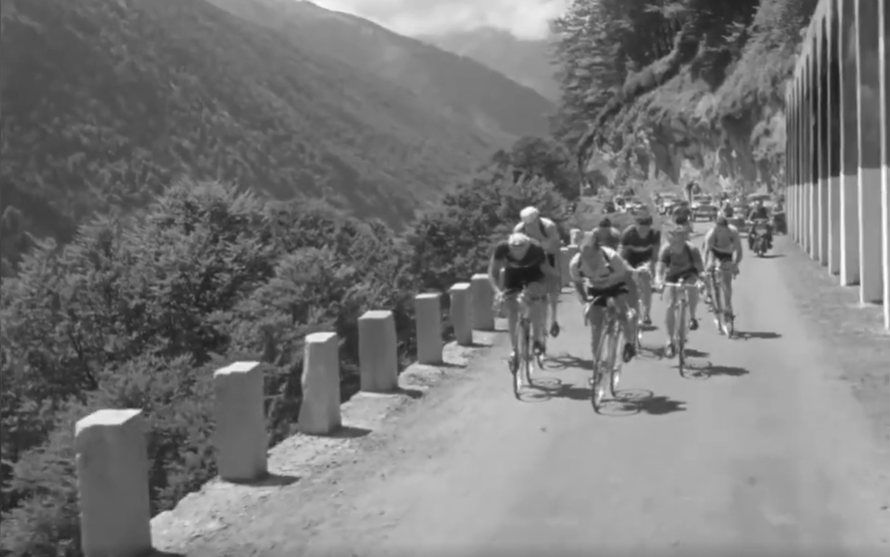Mountain bike preparation: 2 - The technique

But the mountain is something else in terms of effort and intensity of effort. defects have more accentuated harmful consequences than than plain, whether during ascent as well as descent.
Here is a little overview of the points to work.
And even if you do not climb like Alberto Contador or Nairo Quintana, a successful cyclo stay at the La Source chalet, deserves a few weeks of preparation!
The climbing technique
Learn to breathe effectively
- A deep and regular breathing contributes to the good oxygenation and the evacuation of CO2, and therefore an increased yield. A common bike error is to breathe only with the top of the rib cage, and fall into anarchic breathing in difficult passages (hyperventilation).
- Breathe by the belly, inspire through the nose: so that the chest unfolds as much as possible, you have to get used to inspiring through the nose, first swelling the belly without forcing on the rib cage, which naturally unfolds thanks in diaphragm. Nasal inspiration also offers the advantage of avoiding rapid drying of the mouth.
- Calling your breathing: on a regular rise, stalling your breathing on the pedaling rate allows you to gain regularity and reduce fatigue.
- Training there outside the bicycle: thanks to Kardia type cardiac coherence applications, you can practice going from 15-20 breathing per minute (normal situation) to 10 per minute in abdominal breathing. Yoga, pilates, swimming are very useful supplements for learning to breathe.
Optimizing your pedal stroke: the famous "round pedal"
This technical gesture is not specific to the mountains, and it will take much more than a month to master it, but it clearly improves power during ascension therefore reason to get into it!
- It is a circular movement with the feet and not only vertical, to limit the "dead points", when the pedal is at the top or below. At that time, each foot "winds" its pedal in a coordinated movement: while one pushes the high pedal, the other pulls the low pedal as if to scratch the ground.
- The round pedaling requests much more calf muscles and extensors, than vertical pedaling where it is mainly the working thighs.
- It requires coordination - especially at high cadence - and the best to learn it is to focus on a single leg by "fixing" everything else. On a bike fixed on Home-Trainer, we work one leg, then the other, for a few minutes. Make several sessions per week.

- Look at the pros: at the top nothing moves, and yet they meet! In a sitting position, the efficiency is indeed optimal when one manages to ride in comfort with high cadence (80 RPM at least), this rate offering the best biomechanical yield and the best muscle oxygenation. With high cadence, being well shelved is necessary, it allows you to better distribute the force on the bike.
- The target rates are 75-80 up and up to 105-110 on the dish or the false descending flat.
- This level of cadence implies a good cardiac output and specific training (rib velocity), but also sheathing work, and well -adapted bracquets (see latest paragraph).
 As a dancer, work the fluidity
As a dancer, work the fluidity
- In the mountains we put ourselves in a dancer to restart in a steepest section, or to relax after a long sitting position. Indeed in a sitting position, the quadriceps muscles (located on the top of the thigh) and large glutes are enormously asked. The dancer position allows them to recover, by requesting other muscles (iliac psoas, anterior right and designer)
- Go down a tooth just before you put into a dancer, and go up a tooth, once sitting on the saddle.
- To operate a good energy transfer to the pedals, the bust is straight, shoulders above the hanger (no further forward), and switch it to the side of the leg that descends, alternately, without moving the bike . Tent or folded arm, it is a question of sensations to find the best efficiency and fluidity.
- The pedaling remains flexible and sunk, by wrapping well with the ankles as a articulation axes, to avoid a strong elevation of the heart rate.
- For good learning, start at low cadence (50-60) with large coastal developments. Even if everyone has their style, do not hesitate to look at how the pros - as in this photo of a master in the matter, Alberto Contador.
The descent technique
Tame the descent technique on dish and small bumps
- One of the greatest fears of cyclists in the slope is the feeling that the bicycle escapes them. You have to learn to descend without stress and with ease, which also contributes to better recovery.
- Start by training on small bumps or even on the dish for the descent position.
- The practice of mountain biking is excellent to defeat its apprehension in Cyclo descent.
The position is low, sitting on the back, the thighs are dynamic
- The body of gravity of the body is lowered, for better stability in turns.
- The hands are in the hollow of the hanger (in the drop), index and major on the brake levers, lightly folded arm and low elbows.
- To tackle the rear wheel on the ground, the position is seated by pushing with the arms to carry the weight on the back of the bike, even if it means taking the buttocks out of the saddle when you have to brake strong enough.
- The thighs are dynamic, in a “squat” position to absorb road imperfections and be able to react quickly.
- In a straight line, the cranks are parallel to the ground, a foot in front and a foot behind.
- We remain released, taking advantage of the replats to relax the back, the arms, the hands.
 The gaze guides the trajectory, projecting far away
The gaze guides the trajectory, projecting far away
- We naturally tend to roll where we look. Stay focused by looking far ahead, in the direction you want to go, not what you want to avoid or on your meter.
- The gaze must always be towards the output of the turn, then further on the slope in order to verify if there is no obstacle or traffic.
- Avoid the spills (gravel) and be particularly cautious in the event of white strips, gravel areas, stones, nests, vehicles, other slower cyclists or pedestrians, animals, etc.
The body enters the curve and the opposite foot press the pedal in the low position
- As on a motorcycle, the bust engages in the direction of the turn and the inner knee comes out to facilitate the turn.
- The outside foot supports to promote adhesion, pedal at the bottom at 6 a.m.
Braking is made of 2 brakes at the start of the turn, and we then release
- Do not brake all the time, to avoid overheating the brake surfaces on the rims. If you have to brake often, do it in intervals from 1 to 2 seconds rather than a soft and continuous braking.
- Build on the turn approach, before being engaged in the curve, when the two wheels are online. Raise the bust and press the two brakes simultaneously, while dosing them correctly.
- If you arrive too fast, press the rear brake stronger to avoid hunting front. This is why you need weight on the back.
- Once the turn started, release the brakes, sleep the bike by applying the pressure on the external pedal to improve adhesion. Never brake in the turn itself.
If possible you keep pedaling and velocity to avoid heavy legs.
- Your legs have accumulated waste ascended, and the aches will appear quickly if they do not move at all.
- It is therefore necessary to maintain a minimum of pedaling and velocity in order to prevent the heavy legs effect when restarting the effort. And for that, you should not put too much gear on the descent. Pin outputs are conducive to this, because we are at a relatively small speed.
- But if it generates too much imbalance, stop pedaling or pedal slowly, it will always be better than nothing!
Safety above all!
- Still stay focused on potential dangers, those of the road itself (gravel, chicken nests, white bands, water ...) or from vehicles or other cyclists.
- Respect the highway code.
And now, good training, and do not hesitate to review the previous article for the first part of the mountain bike preparation: the physical ...
See you soon at the Chalet La Source!
- Views: 312




 Any cyclist who regularly practices in the plain, is used to the ribs and hilly circuits.
Any cyclist who regularly practices in the plain, is used to the ribs and hilly circuits. The work of force typically consists, on a hilly route, to set up all the bumps in the Surbraquet, at 45-60 RPM, without significantly increasing the heart rate (I2). We sit as much as possible to make the legs work only, and we focus on your pedaling technique.
The work of force typically consists, on a hilly route, to set up all the bumps in the Surbraquet, at 45-60 RPM, without significantly increasing the heart rate (I2). We sit as much as possible to make the legs work only, and we focus on your pedaling technique. The work of velocity (ability to "mill") helps maintain good oxygenation of the muscles and elimination of lactic acid.
The work of velocity (ability to "mill") helps maintain good oxygenation of the muscles and elimination of lactic acid. To optimize training on the bicycle, nothing like good PPG. The best bodybuilding exercises for the cyclist are as follows:
To optimize training on the bicycle, nothing like good PPG. The best bodybuilding exercises for the cyclist are as follows: Plush exercises to work explosiveness, and are more comfortable in rhythm changes on the bike.
Plush exercises to work explosiveness, and are more comfortable in rhythm changes on the bike. CardioFrequencemeter is the basic tool, the heart rate being directly linked to muscle oxygenation.
CardioFrequencemeter is the basic tool, the heart rate being directly linked to muscle oxygenation. Evaluate the developments you need for difficult ascents (slopes greater than 10%), by measuring the rate - and therefore the speed - which you can maintain, your "comfort zone".
Evaluate the developments you need for difficult ascents (slopes greater than 10%), by measuring the rate - and therefore the speed - which you can maintain, your "comfort zone".

 Stage 13 (134.7 km) is a pure mountain stage: from Formigal -Huesca, the runners will spend 4 passes - Pourtalet, Aubisque, Soulor, spandelles before joining Luz then Barèges for the last ascent, the pass from the Tourmalet.
Stage 13 (134.7 km) is a pure mountain stage: from Formigal -Huesca, the runners will spend 4 passes - Pourtalet, Aubisque, Soulor, spandelles before joining Luz then Barèges for the last ascent, the pass from the Tourmalet.




